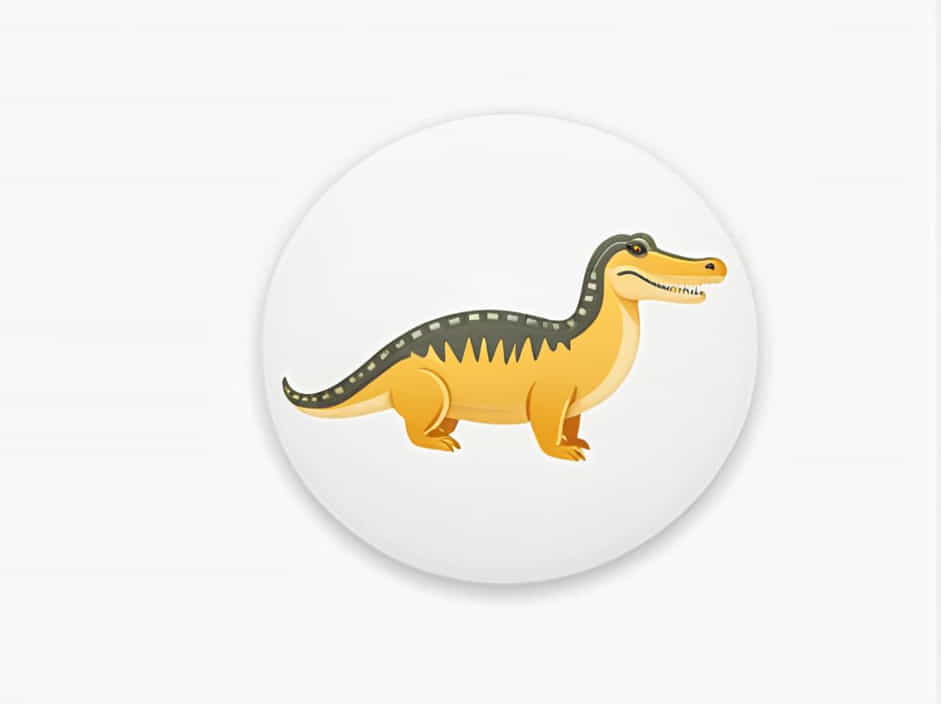The Nile crocodile (Crocodylus niloticus) is one of Africa’s largest and most feared predators. Found in rivers, lakes, and wetlands, this reptile dominates its environment with powerful jaws and an aggressive nature. However, despite its fearsome reputation, the Nile crocodile has an unusual relationship with a much smaller bird—the Egyptian plover (Pluvianus aegyptius).
The Egyptian plover, often called the “crocodile bird,” is believed to have a symbiotic relationship with the Nile crocodile. This tiny bird is said to clean the crocodile’s teeth, removing parasites and food debris. But is this relationship real, or is it just a myth? Let’s explore the fascinating connection between these two species.
The Nile Crocodile: Africa’s Apex Predator
Physical Characteristics
The Nile crocodile is a massive reptile that can grow up to 20 feet (6 meters) long and weigh over 1,600 pounds (725 kg). It has:
- A powerful, elongated snout with sharp teeth designed for gripping prey.
- A thick, armored body covered in tough, scaly skin.
- Strong limbs and a muscular tail, enabling swift movement in water.
Diet and Hunting Tactics
Nile crocodiles are carnivorous ambush predators. They primarily feed on:
- Fish, birds, and small mammals.
- Larger prey such as zebras, wildebeests, and even humans on occasion.
- Carrion (dead animals), making them opportunistic feeders.
Using their camouflage and patience, they wait for prey to approach the water before attacking with astonishing speed and force.
The Egyptian Plover: The “Crocodile Bird”
Physical Characteristics
The Egyptian plover is a small, slender bird with:
- A striking black-and-white head pattern.
- A light blue-gray back and orange underbelly.
- Long, thin legs adapted for wading in shallow water.
Diet and Feeding Habits
The Egyptian plover is an insectivore, meaning it feeds primarily on:
- Small insects found in riverbanks and muddy shores.
- Larvae and parasites that cling to large animals, including crocodiles.
This feeding habit has led to the widespread belief that the Egyptian plover cleans the teeth of Nile crocodiles, making their relationship one of mutual benefit.
The Myth and Reality of Their Relationship
The Symbiotic Relationship Theory
The story of the Nile crocodile and the Egyptian plover is one of the most famous examples of mutualism—a relationship where two species benefit from each other. The theory suggests that:
- The crocodile opens its mouth, allowing the plover to enter.
- The plover picks out pieces of meat and parasites, preventing infection.
- The crocodile allows this cleaning process without attacking the bird.
This interaction would benefit both creatures:
- The crocodile gets clean teeth, reducing the risk of disease.
- The plover gets an easy meal from the scraps left behind.
Scientific Evidence: Fact or Fiction?
Despite the popularity of this story, scientific evidence remains limited. There are no widely documented cases of Egyptian plovers cleaning crocodile teeth in the wild. Some researchers believe this relationship is exaggerated or misunderstood, while others suggest it might occur but is rarely observed.
However, many birds and animals do engage in symbiotic cleaning behaviors. For example:
- Oxpeckers feed on ticks from large mammals like buffalo and rhinos.
- Cleaner fish remove parasites from sharks.
- Certain birds eat insects off hippos and elephants.
While the exact nature of the Nile crocodile and Egyptian plover’s relationship is debated, the concept is not impossible.
Other Symbiotic Relationships in Nature
The possible partnership between the Nile crocodile and Egyptian plover is just one example of symbiosis in the animal kingdom. Other examples include:
1. Clownfish and Sea Anemones
Clownfish live among sea anemone tentacles, gaining protection from predators. In return, the fish keeps the anemone clean and provides nutrients.
2. Bees and Flowers
Bees collect nectar from flowers, helping with pollination in the process. This allows plants to reproduce, benefiting both species.
3. Ants and Acacia Trees
Acacia trees provide ants with food and shelter, while the ants protect the tree from herbivores by attacking any animals that try to eat its leaves.
Conservation Status of the Nile Crocodile and Egyptian Plover
Nile Crocodile Conservation
The Nile crocodile is classified as Least Concern by the IUCN, meaning it is not currently endangered. However, threats to its survival include:
- Habitat destruction due to human expansion.
- Illegal hunting for skins and meat.
- Pollution and water contamination affecting its ecosystem.
Egyptian Plover Conservation
The Egyptian plover is also considered a species of Least Concern, but it faces challenges such as:
- Loss of wetland habitats due to climate change and human activity.
- Declining insect populations, which affect its food sources.
The relationship between the Nile crocodile and the Egyptian plover is a fascinating subject that has intrigued scientists and nature enthusiasts for centuries. While there is limited scientific proof that plovers clean crocodile teeth, their interactions in shared habitats suggest some form of coexistence.
Nature is full of unique partnerships, and whether fact or legend, the story of the crocodile and the plover reminds us of the delicate balance of ecosystems. Understanding and protecting these creatures ensures that their incredible natural behaviors can be studied for generations to come.
